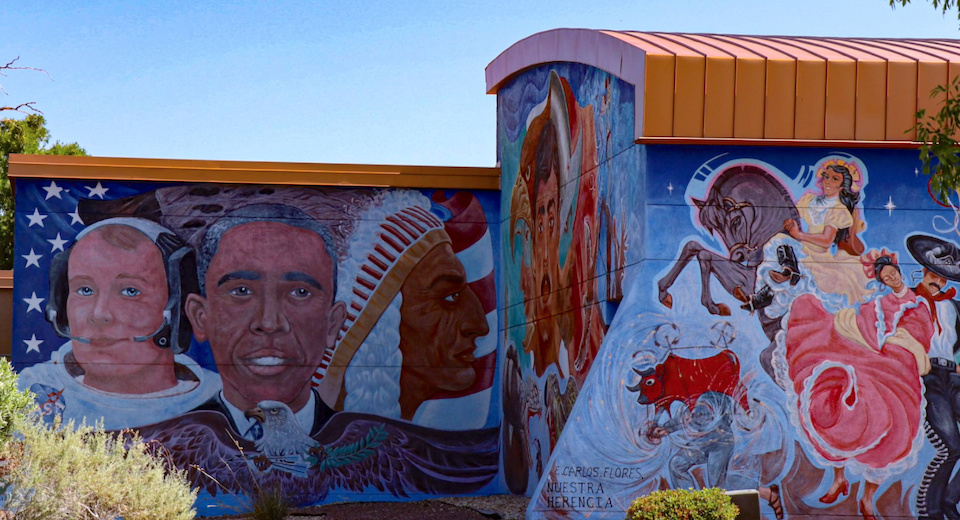
It took more than a century for Mexico and the U.S. to define the countries' border at El Paso, Texas/Consuelo Martinez
When the 1848 Treaty of Guadalupe Hidalgo officially ended the Mexican-American war that was waged over the United States’ annexation of Texas, it contained an agreement that the Rio Grande River defined the international border between the United States and Mexico. However, this treaty also created the Chamizal dispute.
The dispute was a border conflict between El Paso, Texas, and Ciudad Juarez, Chihuahua, Mexico, caused by the Rio Grande River’s course naturally shifting, causing tensions between what was the borderline between the countries. The dispute lasted nearly a century before the Chamizal Treaty was created.
After the Chamizal Treaty was signed in August 1963, President John F. Kennedy and Mexico’s President Adolfo Lopez Mateos agreed to find a solution to the borderline. It wasn’t until President Lyndon B. Johnson’s administration that the agreement with President Lopez Mateos was carried out.
Under the treaty, the United States and Mexico agreed to relocate about four miles of the Rio Grande River through a concrete-lined channel. During this time, Mexico gave the United States a portion of undisputed land, and a piece was used to create Chamizal National Memorial to commemorate the diplomatic resolution of a century-long boundary dispute.
The name “Chamizal” comes from the Spanish word chamizo, a common name for the four-wing saltbush that covered part of the disputed land which is now near the present day park.
“Chamizal National Memorial is a living memorial to the Chamizal Treaty that provides urban spaces in which to enjoy a range of recreational and cultural activities, including those representing the cultures of the borderlands,” said National Park Service staff at the national memorial.
Within the memorial is the famous mural “Nuestra Herencia,” (Our Heritage) done by Carlos Flores, which depicts the importance of the Chamizal Treaty. The mural contains art featuring the two cultures of the United States and Mexico through significant moments in time and is a visual representation showing that the differences and similarities of the countries can bring people closer together.

The famous Nuestra Herencia mural celebrates the two countries' cultures/Consuelo Martinez
According to Chamizal’s staff, the memorial fosters goodwill and mutual respect between the two countries as they celebrate creative cultural exchanges. Right across the border fence in Mexico is the memorial’s counterpart, Parque Público Federal el Chamizal, which cannot be seen through the border fence despite the close proximity El Paso holds to Ciudad Juarez.
The Chamizal National Memorial is a 55.9-acre park with a view of El Paso and Ciudad Juarez’s mountains, and downtown El Paso’s skyline along with an international bridge leading into Mexico.
The treaty’s significance remains relevant today as the two sister cities not only share a river and the Chihuahuan Desert ecosystem but lifestyles that filter through the border.
One example of the countries’ interwoven cultures is the memorial’s annual Borderland Heritage Festival, where groups share their culture from within the El Paso community through story tellers, music, and food. In addition, Chamizal is home to the Siglo de Oro Drama Festival and Border Culture Theater Festival; however, they were cancelled indefinitely this April due to COVID-19.
“We have also continued to host the Mexican Consulate in El Paso for their Independence celebration, as well as some of the City of El Paso's Music Under the Stars concerts while they moved some of the performances to other venues during the past few years. This year, the city had cancelled the concert series prior to the pandemic,” said park Ranger Gina Hernandez.
Despite the abundance of activities set in place, there has been a noticeable decline in visitors to the memorial even prior to the COVID-19 pandemic. In 2016 the park saw 147,938 visitors, whereas just last year the park counted just 38,228 visitors.

A 4-mile-long concrete channel was dug to divert the Rio Grande River/Wikimedia Commons
Hernandez said that visitation is impacted through a range of factors, such as budget, staff size, and support of the community. However, in recent years they have noticed an increase to their Cultural Center, where individuals have access to museum exhibits, videos, and have the chance to learn more about the Chamizal National Memorial.
“For this reason, we are certainly looking forward to the day when we can safely open the Cultural Center and invite visitors to experience our new museum exhibit, which shares our core history through personal perspectives, historic documents and images, compelling audio and video accounts, and an immersive experience. Meanwhile, we are working hard to prepare more virtual experiences for all of our visitors,” said Hernandez.
The Chamizal National Memorial is reopening in phases; currently only park grounds and outdoor restrooms are open to the public, while administrative offices and the cultural center remain closed due to COVID-19.

 Support Essential Coverage of Essential Places
Support Essential Coverage of Essential Places






